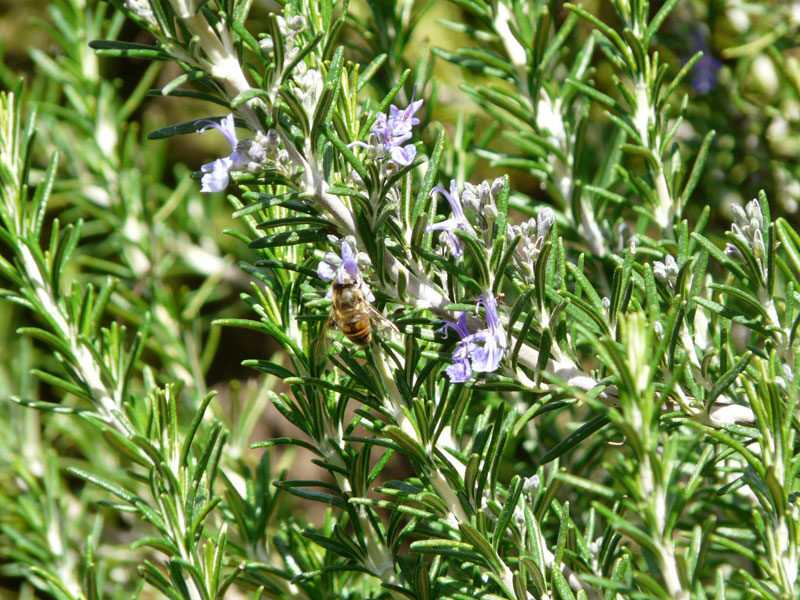Rosemary (Rosmarinus officinalis)

The rosemary from the rocky coastal regions of the Mediterranean is familiar to us mainly as a spice plant. The evergreen bushy shrub can reach a height of up to 2 metres and exudes an intensely aromatic scent.
In naturopathy, the needle-like leaves and the rosemary oil extracted from them are used. The active ingredients are mainly the camphor-like essential oil as well as resins, tannins, flavonoids and bitter substances. In our latitudes, rosemary has been appreciated since the Middle Ages and experienced a revival with Sebastian Kneipp.
The main areas of application when used internally are in particular the activation of the cardiovascular system, the stimulation of appetite and digestion, a stimulation of the blood supply of the abdominal organs as well as a general strengthening of the organism after illnesses and nervous states of exhaustion. Externally, rosemary preparations are used to treat rheumatic diseases, gout and circulatory problems due to their circulation-promoting effect.
Only recently has the high antioxidant, cell-protecting potential of rosemary extract been discovered. In addition, rosemary oil has been shown to have a germicidal effect that is many times stronger than that of phenol.